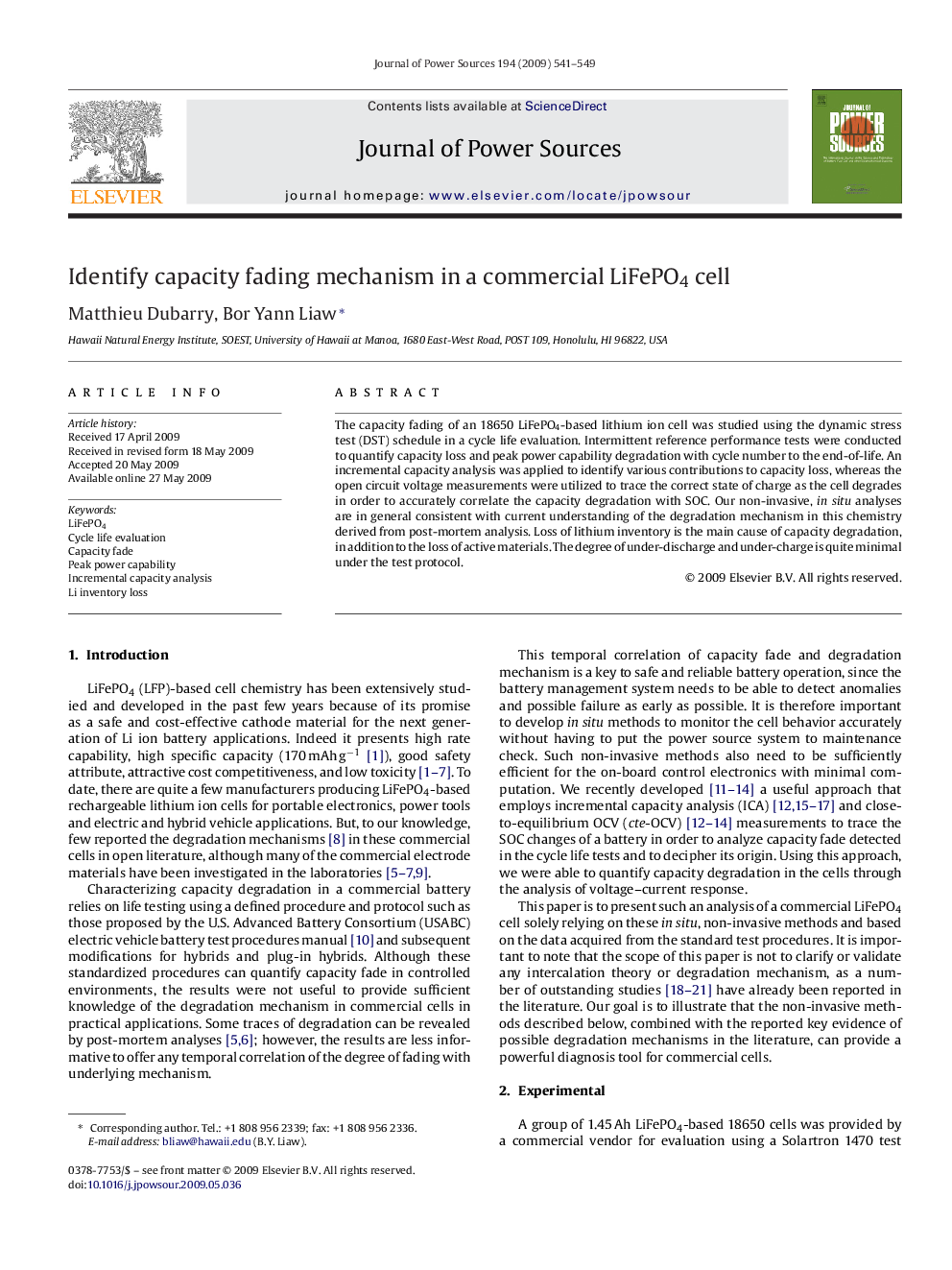| Article ID | Journal | Published Year | Pages | File Type |
|---|---|---|---|---|
| 1289878 | Journal of Power Sources | 2009 | 9 Pages |
The capacity fading of an 18650 LiFePO4-based lithium ion cell was studied using the dynamic stress test (DST) schedule in a cycle life evaluation. Intermittent reference performance tests were conducted to quantify capacity loss and peak power capability degradation with cycle number to the end-of-life. An incremental capacity analysis was applied to identify various contributions to capacity loss, whereas the open circuit voltage measurements were utilized to trace the correct state of charge as the cell degrades in order to accurately correlate the capacity degradation with SOC. Our non-invasive, in situ analyses are in general consistent with current understanding of the degradation mechanism in this chemistry derived from post-mortem analysis. Loss of lithium inventory is the main cause of capacity degradation, in addition to the loss of active materials. The degree of under-discharge and under-charge is quite minimal under the test protocol.
